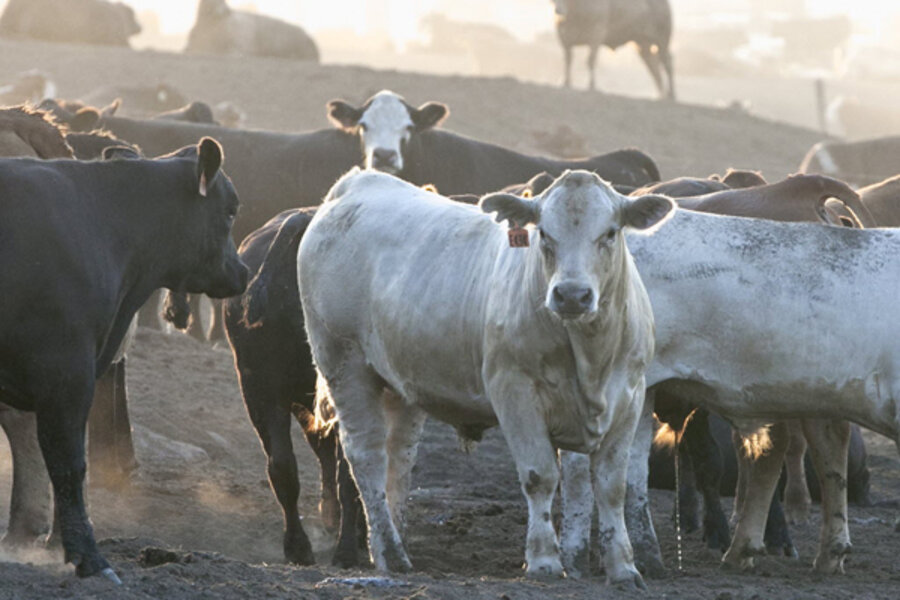Cattle herds dwindle in drought
| Wichita, Kan.
A widespread drought that's forcing American ranchers to sell off animals has helped shrink the US cattle herd to its smallest number in at least four decades.
The National Agricultural Statistics Service reported Friday that the number of cattle and calves in the United States totaled 97.8 million head as of July 1. That's 2 percent less than a year ago. Beef cattle numbers were down 3 percent at 30.5 million head counted, while dairy cow numbers remained unchanged at 9.2 million.
Overall, it's the smallest cattle inventory since the agency began a July count in 1973.
Glynn Tonser, an associate professor in agricultural economics at Kansas State University, said the smaller cattle numbers reflect a years-long trend that was speeded up by last year's drought in the Southwest. Pastures dried up, and feed prices skyrocketed, forcing ranchers to sell off animals.
There are two signs the cattle numbers won't recover soon. The nation's 2012 calf crop also was 2 percent smaller compared to a year ago, with 34.5 million calves expected to be born this year, the report estimated.






